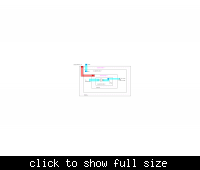Braski
Full Member level 3
- Joined
- Dec 22, 2009
- Messages
- 154
- Helped
- 32
- Reputation
- 64
- Reaction score
- 28
- Trophy points
- 1,308
- Location
- Florence (ITALY)
- Activity points
- 2,384
I know what is soft connection. However, i still have one problem, and i don't know if i am doing right
i have a buried n+ layer in my process.
i have some nmos with b-s connection, instead of bulk to ground.
as far as i know, i need to put these nmos in an isolated pwell. To do it, i draw a nwell ring, with a buried n+ to close from below. I can put the MOS herein and put this pwell wherever i need.
After completion of my circuit, i need to make a guard nwell ring around the whole circuit, with its buried. The foundry needs it.
I put my pwell nmos inside the ring. The buried layers become ONE layers, and the pwell is still isolated in my opinion. BUT calibre lvs give me SOFT CONNECTION WARNING between gnd! and the source net of the isolated nmos.
WHY??? am i missing something?
if you need i wil post a drawing
i have a buried n+ layer in my process.
i have some nmos with b-s connection, instead of bulk to ground.
as far as i know, i need to put these nmos in an isolated pwell. To do it, i draw a nwell ring, with a buried n+ to close from below. I can put the MOS herein and put this pwell wherever i need.
After completion of my circuit, i need to make a guard nwell ring around the whole circuit, with its buried. The foundry needs it.
I put my pwell nmos inside the ring. The buried layers become ONE layers, and the pwell is still isolated in my opinion. BUT calibre lvs give me SOFT CONNECTION WARNING between gnd! and the source net of the isolated nmos.
WHY??? am i missing something?
if you need i wil post a drawing
Last edited:


